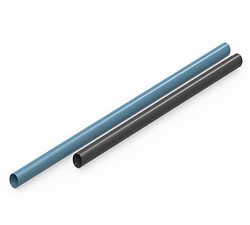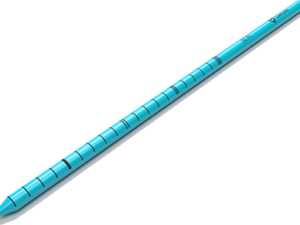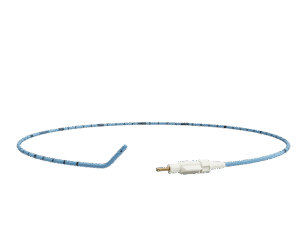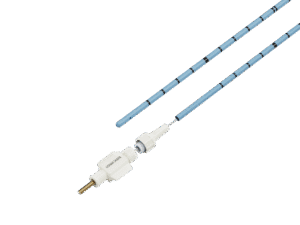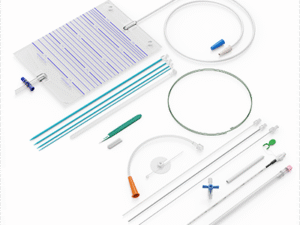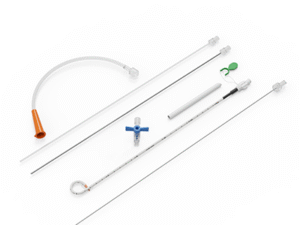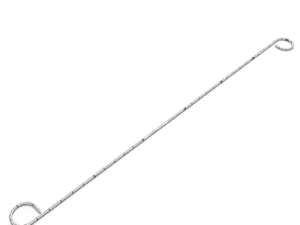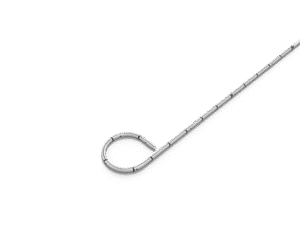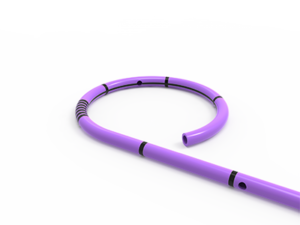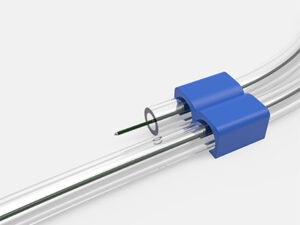Urology Branch of medicine
Urology, also known as genitourinary surgery, is the branch of medicine that focuses on surgical and medical diseases of the urinary-tract system and the reproductive organs. Organs under the domain of urology include the kidneys, adrenal glands, ureters, urinary bladder, urethra, and the male reproductive organs
Urology
Amplatz renal sheath is used during renal dilatation to provide atraumatic working tracks after removal of dilator.
Urology
Amplatz Type Renal Dilator is used for enlarging the skin incision prior to a nephrostomy or percutaneous nephrolithotomy (PCNL) procedure to introduce the amplatz sheath.
Urology
Chiba needle with the possibility of accurate cutting and providing excellent visibility with ultrasound guidance is used for nephrostomy placement or percutaneous nephrostomy, aspiration, and injection of contrast liquid.
The angled tip ureteral catheter is designed to navigate narrow or tortuous segments of the ureter, making it especially useful in cases of obstruction. This specialized catheter effectively facilitates urine drainage and assists in managing urinary tract issues.
The hydrophilic ureteral catheter is a uniquely designed, high-quality catheter that maximizes patient comfort. The first 10 centimeters of the catheter's tip are coated with water-absorbent hydrophilic materials that activate upon contact with water, eliminating the need for additional lubricants during ureteral placement. The hydrophilic ureteral catheter is particularly effective and easier to insert in cases of severe ureteral strictures or obstructions caused by stones or other factors due to its smooth, lubricated surface.
The double-J stent with a diamond-like carbon coating is manufactured using advanced technology for long-term therapeutic applications. This specialized coating significantly reduces the formation of crystalline biofilms, deposits, and urinary tract infections.
Radio Intervention
The Percutaneous Nephrostomy Set is used to drain urine from the renal pelvis in patients with hydronephrosis caused by obstruction, ureteral stones, or pelvic inflammation. It may also be used to introduce medication or to measure urine output in the upper urinary tract.
Radio Intervention
The Percutaneous Nephrostomy Set is used to drain urine from the renal pelvis in patients with hydronephrosis caused by obstruction, ureteral stones, or pelvic inflammation. It may also be used to introduce medication or to measure urine output in the upper urinary tract.
Radio Intervention
The Percutaneous Nephrostomy Set is used to drain urine from the renal pelvis in patients with hydronephrosis caused by obstruction, ureteral stones, or pelvic inflammation. It may also be used to introduce medication or to measure urine output in the upper urinary tract.
The hydrophilic coating on the ureteral stent makes its surface slippery when in contact with fluids. This characteristic reduces friction and facilitates the passage of the stent through the ureter.
The antimicrobial ureteral stent minimizes infection risk and enhances performance, offering a safer, more comfortable experience for patients
In cases of ureteral obstruction or injury - whether due to kidney stones,kidney transplantation, or other causes -physicians often use a double-J stent to temporarily drain urine from the kidney to the bladder while definitive treatments are implemented. Double-J stent placement can be performed through techniques such as cystoscopy, ureteroscopy, and open surgery. Gohar Shafa Company offers a range of designs, lengths, and coatings to meetthe anatomical and procedural needs of diverse patients.
Urology
straight-Tip Guide Wire Gaining access and passing instrumentation during diagnostic and interventional Procedures
Urology
Ureteral catheters are commonly used in urology for direct ureteral drainage, urine sample collection navigating small strictures, and accessing the renal pelvis for diagnostic and therapeutic procedures. This high-quality ureteral catheter is designed to maximize patient comfort. Its smooth surface minimizes tissue damage during insertion, reducing the risk of ureteral reactions that could lead to ulcers, swelling, and inflammation
The double J stent for kidney transplant surgery, as a critical medical device, has specific features that aid in improving function and reducing complications in kidney transplant patients.
Urology
Gohar Shafa guidewires are designed to ensure rapid access, easy advancement, and maximum maneuverability, and help provide precise control at every step of the process. Urological guidewires are usually used to guide the ureteral catheter or double J stent in the urinary tract and ureter, which are produced in different types, sizes, and lengths for this purpose. Knowing this seemingly simple device and correctly using it will lead to optimal efficiency and better accessibility during the process.
MODELS:
1. Urologic Guidewire (WITH HYDROPHILIC COATING)
2. Urologic Guidewire (WITH PTFE COATING)

